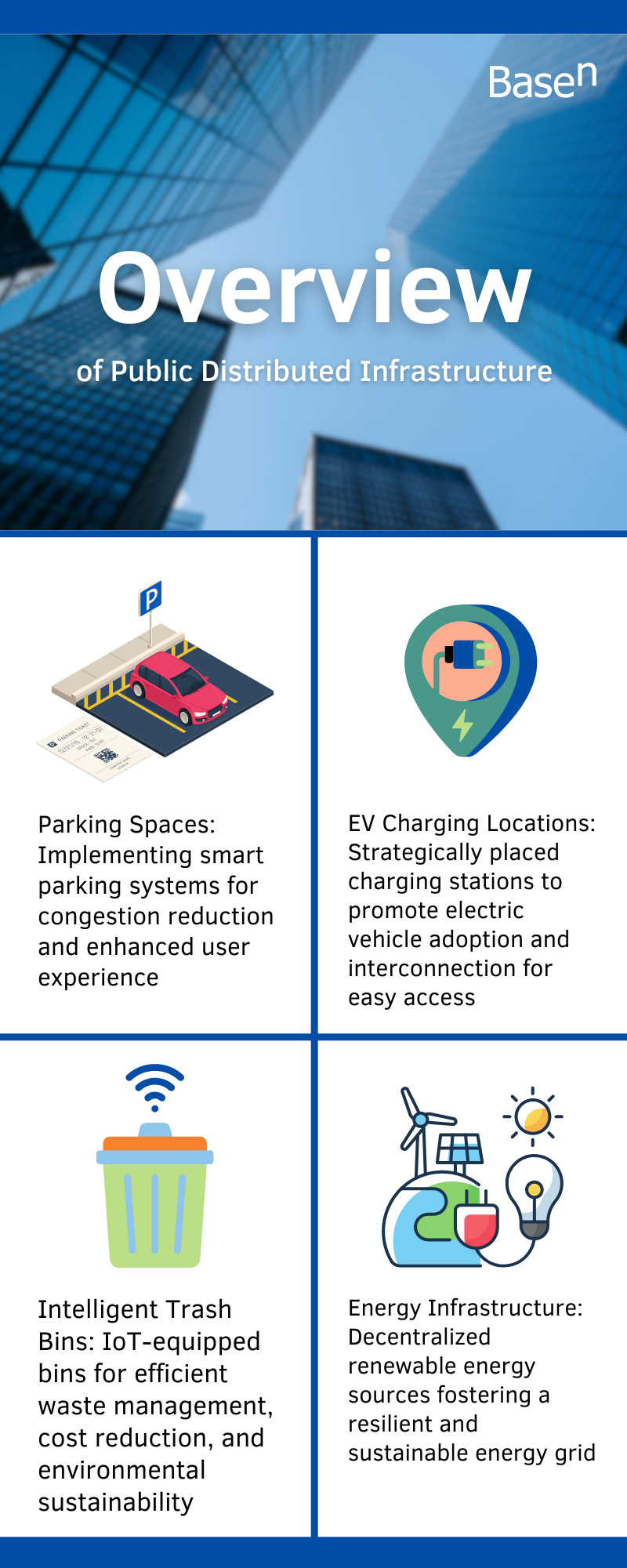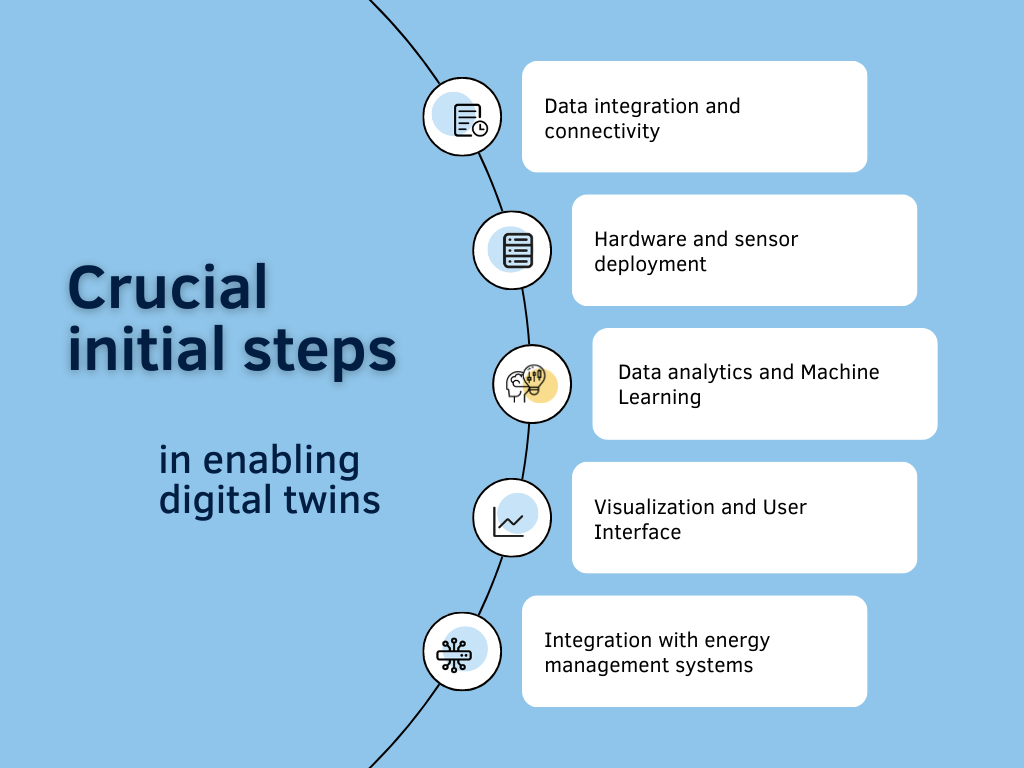The distributed public infrastructure sector involves managing widely dispersed assets critical for public services and community well-being. Explore the transformative potential of digital twins in optimizing EV charging stations and ensuring a sustainable future.
Overview of Distributed Public Infrastructure
- Parking Spaces: Implementing smart parking systems for congestion reduction and enhanced user experience.
- EV Charging Locations: Strategically placed charging stations to promote electric vehicle adoption and interconnection for easy access.
- Intelligent Trash Bins: IoT-equipped bins for efficient waste management, cost reduction, and environmental sustainability.
- Energy Infrastructure: Decentralized renewable energy sources fostering a resilient and sustainable energy grid

Leveraging digital twins
Here are some key roles that digital twins can fulfil in the distributed public infrastructure sector:
- Accurate Planning and Design: Creating virtual representations to optimize infrastructure placement and accessibility.
- Real-Time Monitoring: IoT integration for effective resource management and proactive maintenance.
- Resource Optimization: Analyzing data to optimize resource allocation, enhancing parking, charging, and waste management efficiency.
- Predictive Maintenance: Early detection of anomalies and potential failures to reduce downtime and improve infrastructure reliability.
- Enhanced User Experience: Integrating digital platforms for real-time information and improved service delivery.
- Informed Decision-Making: Data-driven insights for urban planning, policy-making, and operational optimization.
💡 Learn more also about the roles of digital twins in enhancing safety in distributed public infrastructure sector.
Benefits of digital twins for EV charging stations
Industry experts believe that digital twins can play a crucial role in scaling up the charging infrastructure, addressing concerns about range anxiety and ensuring a reliable network of charging stations. EV owners appreciate the transparency and convenience provided by digital twins, as they can easily locate and access charging stations, monitor charging progress remotely, and receive notifications. Charging station operators value the ability of digital twins to optimize energy usage, minimize operational costs, and provide predictive maintenance insights, resulting in improved profitability and sustainability. Governments and policymakers recognize digital twins as a valuable tool for planning and managing the growth of EV charging infrastructure, supporting the transition to cleaner transportation systems.
The adoption of digital twins in the realm of EV charging stations brings forth a multitude of benefits and real delivered value, including:
- Situational awareness: Comprehensive monitoring of chargers for improved management and user experiences.
- Knowledge for R&D: Valuable data-driven insights for research and development, leading to enhanced products.
- Predictive maintenance: Proactive measures for optimal charging station performance and reduced downtime.
- Product lifecycle management: Optimized resource allocation for extended charging station lifespan and cost reduction.
💡 Get to know next-generation digital twin technology and its enhanced role in enabling predictive maintenance.

Enabling digital twins for EV charging stations
Explore how BaseN Digital Twin & IoT Platform empowered an EV charging solution provider in Finland with situational awareness, data-driven energy management, and advanced SLAs (Service Learning Agreements).
Crucial Initial Steps in Enabling Digital Twins
- Data Integration and Connectivity: Robust integration of charging equipment and user data for accurate digital twin representation.
- Hardware and Sensor Deployment: Strategic deployment of smart meters and sensors for comprehensive data capture.
- Data Analytics and Machine Learning: Leveraging patterns and user behavior for predictive maintenance and dynamic load management.
- Visualization and User Interface: User-friendly dashboards for real-time monitoring and informed decision-making.
- Integration with Energy Management Systems: Optimizing charging schedules and energy loads for a greener future.
Embrace BaseN’s Digital Twin technology for scalable EV charging infrastructure, meeting sustainability goals and delivering exceptional customer experiences. Learn more in our buyer’s guide and BaseN Platform FAQs.





One reply on “Digital Twins for EV Charging Stations: A Sustainable Future”
This was beautiful Admin. Thank you for your reflections.